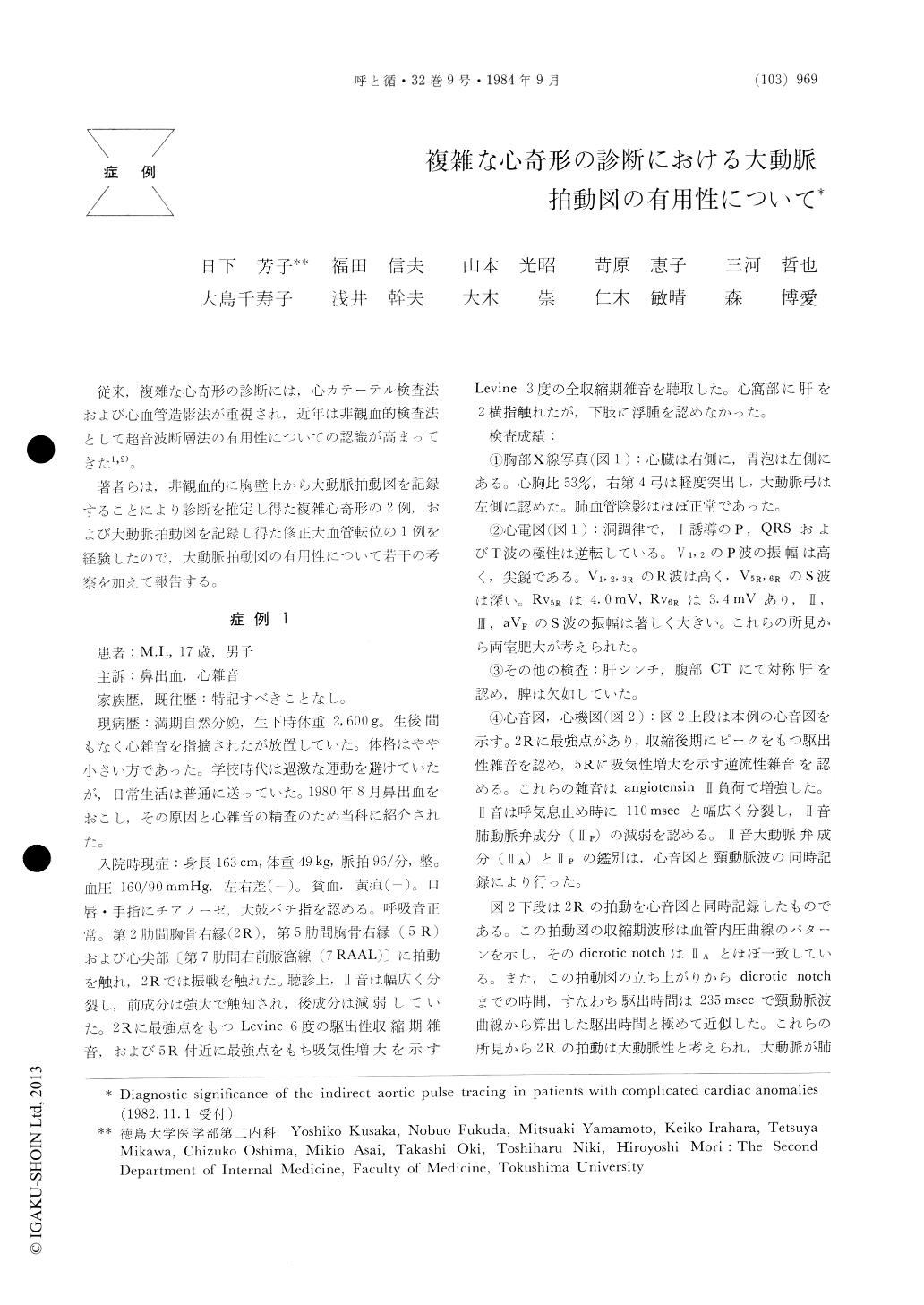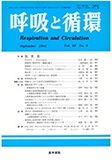Japanese
English
- 有料閲覧
- Abstract 文献概要
- 1ページ目 Look Inside
従来,複雑な心奇形の診断には,心カテーテル検査法および心血管造影法が重視され,近年は非観血的検査法として超音波断層法の有用性についての認識が高まってきた1,2)。
著者らは,非観血的に胸壁上から大動脈拍動図を記録することにより診断を推定し得た複雑心奇形の2例,および大動脈拍動図を記録し得た修正大血管転位の1例を経験したので,大動脈拍動図の有用性について若干の考察を加えて報告する。
Indirect aortic pulse tracing was diagnostic in three cases of complicated cardiac anomalies. The first case had dextrocardia with complete transposi-tion of the great arteries (TGA), pulmonic stenosis (PS), ventricular and atrial septal defects (VSD and ASD). The second case had double outlet right ventricle with PS and VSD. The third case had corrected TGA with PS, VSD and ASD. The last case was operated by the procedures with closure of VSD and ASD, replacement of the anatomical tricuspid valve and grafting between the anatomical left ventricle and the pulmonary artery three years ago.
Indirect aortic pulse tracings were recorded at the second intercostal space just to the right of the sternum in the first case, and just to the left of the sternum in the second and the third cases. No case had aortic aneurysm.
Dicrotic notches of these pulses were almost synchronous with the aortic component of the secondheart sound. Ejection time measured on these pulse tracings was precisely identical with that from carotid pulse tracing, suggesting the aortic origin of these pulses. The diagnosis of theses cases was verified by two-dimensional echocardiography and angiocardiography.
From these results, indirect aortic pulse tracing at the second intercostal space just to the left (right in cases with dextrocardia) of the sternum was considered to be useful for the noninvasive diagnosis of TGA.

Copyright © 1984, Igaku-Shoin Ltd. All rights reserved.


